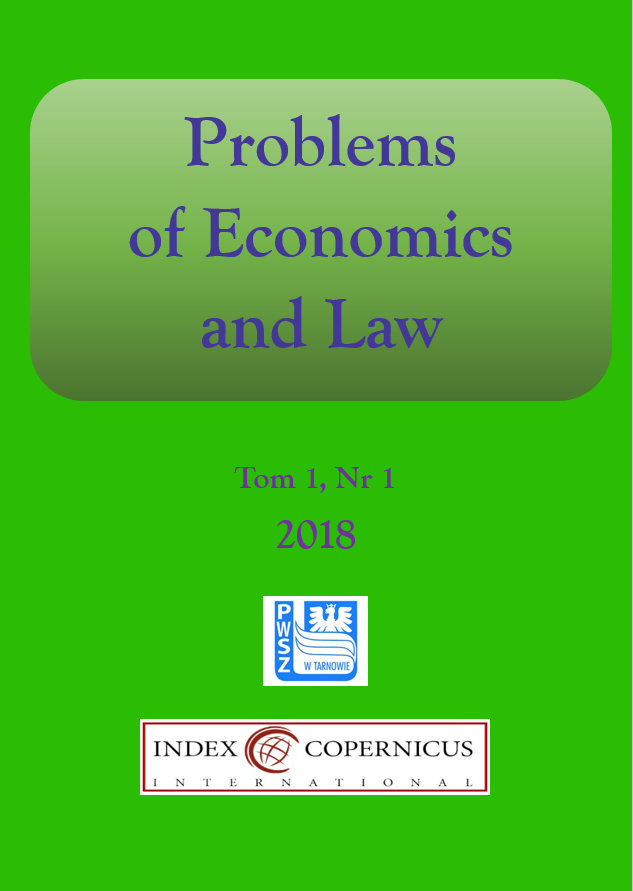Model of education system financing
DOI:
https://doi.org/10.5604/01.3001.0012.8259Keywords:
financing model, AVE, educational production functionAbstract
Aim of the study: An attempt to indicate a model of education financing taking into account the measures of the effectiveness of the education system.
Material and methods: This article shows that the effectiveness of the education system can be measured without taking into account the socio-economic environment of students. The use of AVE, which is a measure of the aforementioned effectiveness of the education system, should be accompanied by an analysis of the level of local socio-economic development. These formulations include a certain inconsistency. It stems from the fact that the modelling of AVE using previous educational achievements of students (at the preceding stage) does not take into account the impact of variables modifying these educational achievements. It is as-sumed that a student’s individual family, economic and social situations do not change so rapidly as to affect their educational attainments in the next stage of education.
Results: However, research conducted in Poland show that socio-economic variables in areas of local government units strongly modify the AVE. This phenomenon was the reason for proposing the correction in the system of education funding.
Conclusions: The proposed model of funding education takes into account the qualitative factors of educational processes. The implementation of such a model should, in the long term, improve the quality of human capital in society.
Downloads
References
ARIAS, R. M. 2009. Uses, applications and problems of educational value-added models.Revista De Educacion, 217-250. Google Scholar
ARIAS, R. M., SOTO, J. L. G., MORERA, M. C. 2009. Concept and evolution of educational value-added models. Revista De Educacion, 15-45. Google Scholar
BIELECKI, P. 2005. Bony edukacyjne. Granice urynkowienia edukacji, Warszawa, Szkoła Główna Handlowa w Warszawie. Google Scholar
BOWLES, S. 1969. Educational Production Function, Washington, Office of Education (DHEW). Google Scholar
CORNELL, G. R. 1985. The value-added approach to the measurement of educational quality. Journal of professional nursing : official journal of the American Association of Colleges of Nursing, 1, 356-63. Google Scholar
CZYŻEWSKI, B., BRELIK, A. 2016. Modelowanie społeczno-ekonomicznych determinant jakości edukacji. Zeszyty Naukowe WSES w Ostrołęce, 20, 93-104. Google Scholar
CZYŻEWSKI, B., POLCYN, J. 2016. Education Quality and its Drivers in Rural Areas of Poland (in print). Eastern European Countryside, 22. Google Scholar
DEUTSCH, J., DUMAS, A., SILBER, J. 2013. Estimating an educational production function for five countries of Latin America on the basis of the PISA data. Economics of Education Review, 36, 245-262. Google Scholar
ESCOBAR, L. D., IZQUIERDO, M. G. 2008. Incidence Analysis of Higher Education Financing System in Spain Using a Behavioural Model. Hacienda Publica Espanola, 117-152. Google Scholar
FERRAO, M. E., COUTO, A. P. 2014. The use of a school value-added model for educational improvement: a case study from the Portuguese primary education system. School Effectiveness and School Improvement, 25, 174-190. Google Scholar
GARY-BOBO, R. 2006. Education, economic efficiency, and distributive justice: a Rawlsian approach. Revue D Economie Politique, 116, 199-228. Google Scholar
HUSHMAN, G., HUSHMAN, C. 2015. Value-Added Modeling in Physical Education. Strategies: A Journal for Physical and Sport Educators, 28, 23-27. Google Scholar
KOEDEL, C., BETTS, J. R. 2007. Re-Examining the Role of Teacher Quality in the Educational Production Function (Working Paper 708). Columbia: University of Missouri -Department of Economics. Google Scholar
KUNDU, A. 2016. The Effectiveness of Public Spending on Education and Health Care in Brazilian Economy. Nile Journal of Business and Economics, 2, 55-68. Google Scholar
LOSKUTOVA, M. V. 2016. The analysis of social and economic efficiency of models and instruments of transformation of the education system. Социально-Экономические Явления и Процессы, 11, 63-69. Google Scholar
MANGOLD, M., OELKERS, J., RHYN, H. 2000. Financing education through educational vouchers - Models and experiences. Zeitschrift Fur Padagogik, 46, 39-59. Google Scholar
MEYER, P. A., NASCIMENTO, M. 2008. School Resources and Student Achievement: Worldwide Findings and Metodological Issues. Educate Journal, 3, 19-30. Google Scholar
RAPPLE, B. 1992. A Victorian experiment in economic efficiency in education. Economics of Education Review, 11, 301-316. Google Scholar
SHOEMAKER, J. S. 1983. Emerging Role of Educational Foundations in Financing Education. Annual Meeting of the California Educational Research Association (Los Angeles, CA, November 17-18, 1983). Google Scholar
THIEME, C., PRIOR, D., TORTOSA-AUSINA, E., GEMPP, R. 2016. Value added, educational accountability approaches and their effects on schools' rankings: Evidence from Chile. European Journal of Operational Research, 253, 456-471. Google Scholar
TOBÓN, D., VALENCIA, G., RÍOS, P., BEDOYA, J. F. 2008. Organización jerárquica y logro escolar en Medellín: un análisis a partir de la función de producción educativa. Lecturas de Economía, 145-173. Google Scholar
TODEA, N., TILEA, D. M., ELSEVIER SCIENCE, B. V. 2011. Comparative analysis between the models for financing of education in Romania and the United Kingdom. 3rd World Conference on Educational Sciences (2011), 15, 5. Google Scholar
http://appsso.eurostat.ec.europa.eu, dostęp: 22.06.2016 r. Google Scholar
Downloads
Published
How to Cite
Issue
Section
License
Copyright (c) 2018 State Higher Vocational School in Tarnow, Poland & Author

This work is licensed under a Creative Commons Attribution-ShareAlike 4.0 International License.





